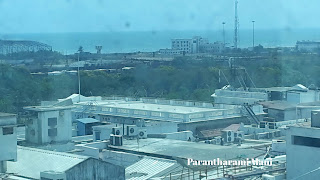Wallajah Gate , Fort St.George one of the seven gates in the Fort in early 20th century. It should have been given this name after the completion of the Fort in 1780s since it led to the Chepauk Palace constructed by Nawab Mohd.Ali Wallajah in 1768. Since the Nawab was an important ally of the British they must have honoured him by giving his name to the gate. Any important dignitary visiting the Fort like the Governor or Commandeer in Chief to take charge of their position used to be honoured by the troops by formation of a street from North Sea Gate to Wallajah Gate. It happened when Sir George Hilaro Barlow anchored on Madras Roads in his ship " Sceptre" on 24th December 1807. He landed at half past 5 O' Clock at the watering face of North Sea Gate where he was received by the outgoing Governor Bentick, Commander in Chief, Chief Secretary and principal inhabitants of the settlement with a nineteen gun salute from the saluting battery. His Majesties 14...











